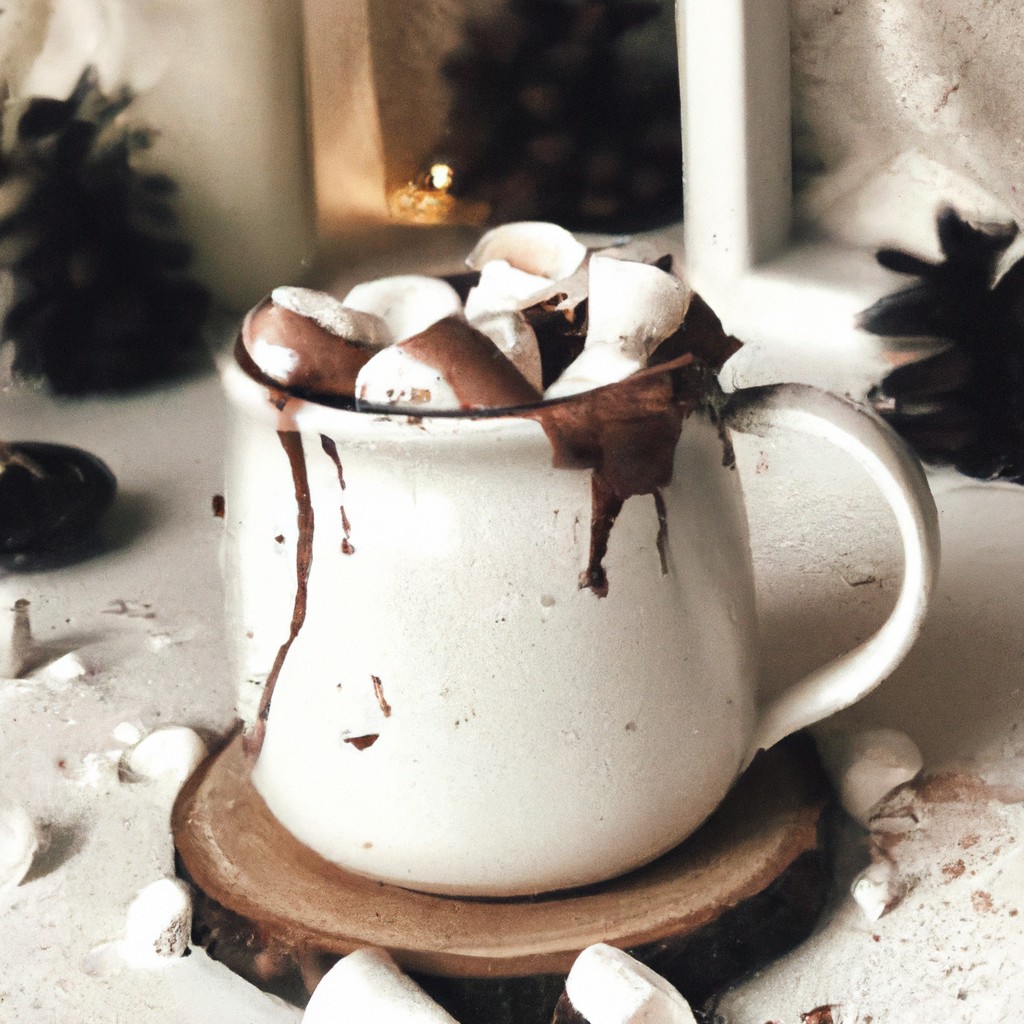Learn about the historical origins of hot chocolate and its journey from ancient rituals to modern-day indulgence.
Key takeaways:
- Hot chocolate originated in ancient Mesoamerica.
- Europeans adapted hot chocolate with sugar and milk.
- Hot chocolate became a symbol of luxury and status.
- Hot chocolate and hot cocoa have distinct differences.
- Hot chocolate offers health benefits when consumed in moderation.
Inside
It Started in Mexico

The history of hot chocolate can be traced back to ancient Mesoamerica, where the Mayans, and later the Aztecs, were the first to cultivate cacao plants. They created a beverage from ground cacao seeds, which they mixed with water, chili peppers, and other spices, forming a frothy, bitter drink called “xocoatl.” Reserved for nobility and warriors, as well as used in religious ceremonies, this early version of hot chocolate was a far cry from the sweetened hot cocoa we’re familiar with today. It was also served cold, not hot, and was esteemed for its invigorating and restorative properties.
European Adaptation
When hot chocolate arrived in Europe in the 16th century, it was still a spiced and somewhat bitter concoction. The Spanish were the first Europeans to taste it, likely thanks to Hernan Cortes who introduced it to the Spanish court. Sugar was then an expensive and rare commodity in Europe, but as it became more accessible, the Spaniards began sweetening the bitter brew to cater to European palates.
Milk was another European addition. While the Mesoamerican recipes employed water, the Europeans started diluting the chocolate with milk, creating a creamier, more indulgent drink. Monasteries in Spain were among the earliest places where this new recipe of hot chocolate was crafted and kept secret.
As the drink gained popularity, it also received some royal endorsements. Anne of Austria, the Spanish princess who became queen of France, is credited with making hot chocolate fashionable in French society. Similarly, Italian traveler Francesco Carletti reported the usage of chocolate in Florence and Venice, leading to the spread of the beverage across the continent.
Chocolate houses, the precursors to coffee houses, began to appear in major European cities. In these establishments, chocolate was often served alongside coffee and tea. As chocolate beverages were consumed by the aristocracy and the wealthy, they became a symbol of luxury and status.
The industrial revolution of the 18th and 19th centuries brought about mechanization that made chocolate production more efficient and affordable, further democratizing the consumption of chocolate. This led to the modern hot chocolate enjoyed today, a far cry from its ancient Mesoamerican roots.
Terminology
Understanding the distinction between “hot chocolate” and “hot cocoa” is important in appreciating the drink’s history. Hot chocolate, traditionally known as “drinking chocolate,” is made from ground chocolate which contains cocoa butter, giving it a richer, creamier texture. On the other hand, hot cocoa is made from cocoa powder, which lacks the cocoa butter and is often lighter and sweeter.
Countries have their names for hot chocolate—Spain calls it “chocolate caliente”, Italy “cioccolata calda”, and France “chocolat chaud”, with each version having unique characteristics. For instance, Italian cioccolata calda is known for its thick consistency, while the French may serve it with a side of whipped cream or churros.
Health Benefits
Hot chocolate can be more than just a comforting beverage; it also offers a variety of health benefits when consumed in moderation. The high cocoa content in quality hot chocolate provides flavonoids, which are antioxidants that can help reduce blood pressure and improve heart health. These antioxidants can also improve cognitive functions and may aid in reducing the risk of some diseases.
Furthermore, the magnesium found in cocoa has been linked to improved muscle and nerve function, and it can also play a role in stress reduction. Dark chocolate, especially with a cocoa content of 70% or higher, can contribute to these benefits. However, it’s important to balance these advantages with the beverage’s potential high sugar content by choosing recipes with less added sugar or using alternative sweeteners.
Additionally, for those looking for a mood booster, hot chocolate contains small amounts of tryptophan, an amino acid involved in the production of serotonin, which can induce feelings of relaxation and well-being.
Remember that while hot chocolate has its perks, it should be consumed in moderation as part of a balanced diet.
Recipe: Classic Hot Chocolate
For a timeless hot chocolate, begin by gently warming four cups of whole milk on the stovetop. Avoid boiling to maintain the milk’s rich texture. In a separate bowl, whisk together a quarter-cup of unsweetened cocoa powder and half a cup of granulated sugar to eliminate lumps and ensure a smooth blend.
Once the milk is hot, gradually mix in the cocoa-sugar combination, stirring constantly until fully incorporated and the mixture is smooth. Add a pinch of salt to enhance the chocolate flavor, along with a half teaspoon of pure vanilla extract for depth.
For added indulgence, consider using chopped high-quality dark chocolate. Add two ounces to the warm milk mixture, stirring until melted and evenly distributed. Serve in pre-warmed mugs and enjoy as is, or top with whipped cream or marshmallows for a touch of sweetness.




